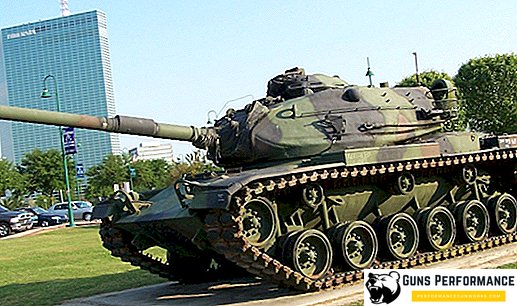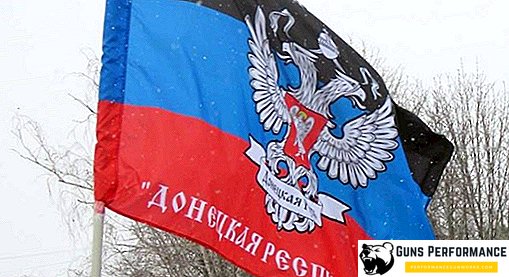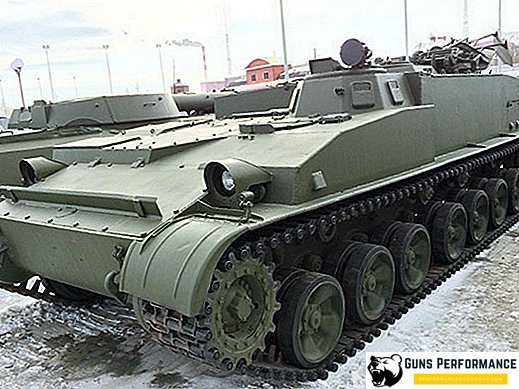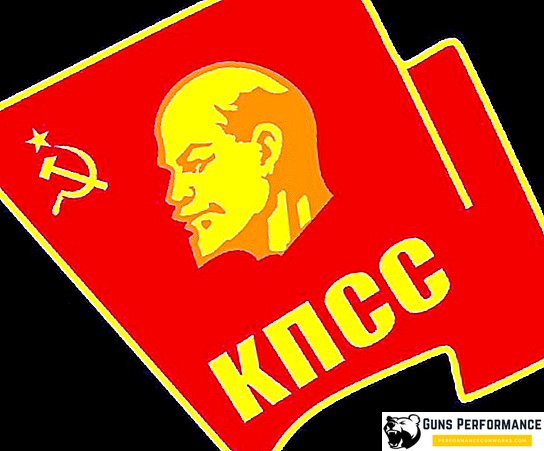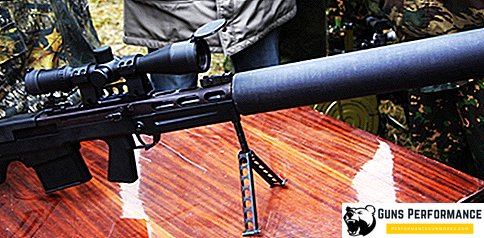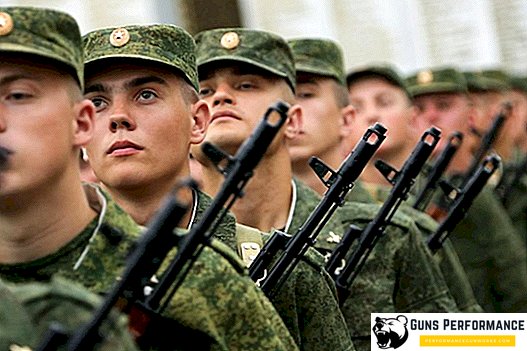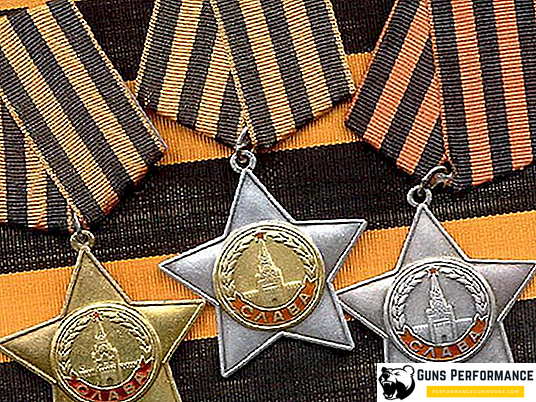
St. George Ribbon is one of the most recognizable symbols of Russian military glory. This ribbon of black and orange color has also become one of the main attributes of the Victory Day in the Great Patriotic War - one of the most respected holidays in our country. Unfortunately, not all of those who tie the St. George ribbon on their clothes or cling to the car know what it really means.
St. George ribbon is painted in two colors (orange and black), in pre-revolutionary Russia it relied on several awards dedicated to St. George the Victorious. These included: the Cross of St. George, the St. George Medal and the Order of St. George.
In addition, starting from about the XVIII century, the St. George ribbon was actively used in Russian heraldry: as an element of the St. George banners (standards), it was worn on uniforms by soldiers of particularly distinguished units, the ribbon decorated the shape of the Guards crew and sailors of ships awarded with St. George flags.
History of St. George Ribbon
Already at the beginning of the 18th century, black, orange (yellow) and white began to be considered the state colors of Russia. This color gamut was present on the state emblem of the Russian state. The sovereign eagle was black, the field of the coat of arms was gold or orange, and white meant the figure of St. George, depicted on the shield of the coat of arms.

In the second half of the 18th century, Empress Catherine the Great instituted a new award — the Order of St. George, who was complained to officers and generals for merits in the military field (though Catherine herself became her first knight). The ribbon was relied on to the order, in honor of which it was given the name Georgievskaya.
The statute of the order stated that the St. George ribbon should have three black and two yellow stripes. However, it was originally not used yellow, but rather orange.

In addition to matching the colors of the state emblem of Russia, this color scheme had one more meaning: the orange color symbolizes fire, and the black color means gunpowder (according to other sources, the battlefield scorched by the war Russian land).
At the beginning of 1807, another award was established, dedicated to St. George the Victorious - the insignia of the Military Order, which was unofficially called the St. George Cross. He was complained to the lower ranks for the deeds committed on the battlefield. In 1913, the St. George Medal appeared, which was also awarded to soldiers and noncommissioned officers for the courage shown in the face of the enemy.

All of the above awards were worn along with the St. George ribbon. In some cases, the tape could be analogous to the award (if the gentleman for some reason could not get it). In the period of the First World War, the Knights of the Cross of St. George in the winter, instead of a sign of distinction, wore such a ribbon on their overcoats.
At the beginning of the 19th century, St. George's banners (standards) appeared in Russia, in 1813 the Marine Guards crew was awarded this distinction, after which St. George ribbon appeared on the sailor caps of his sailors. Emperor Alexander II decided to award ribbons of merit to entire military units. At the top of the banner was placed St. George Cross, and under the top of the St. George ribbon was tied.

St. George ribbon was actively used in Russia until the October Revolution of 1917, when the Bolsheviks abolished all royal awards. However, after that the St. George ribbon remained part of the White movement’s award system already during the Civil War.

In the White Army there were two especially respected marks of distinction: "For the Ice Campaign" and "For the Great Siberian Campaign", both of them had bows from the St. George Ribbon. In addition, the St. George ribbon wore on headdresses, tied on uniforms, fastened to the battle flags.
After the end of the Civil War, the St. George Ribbon was one of the most common symbols of the White Guard organizations of the emigrants.
St. George Ribbon was widely used by various organizations of collaborators who fought on the side of Nazi Germany during World War II. The Russian Liberation Movement (ROD) consisted of more than ten large military units, including several SS divisions, which were staffed by Russians.
Guards tape
After the devastating defeats of the initial period of the Great Patriotic War, the leadership of the USSR needed symbols that could unite the people and raise the fighting spirit of the fighters. In the Red Army at that time there were relatively few combat decorations and insignia of military prowess. Here again the St. George ribbon was useful.
Fully repeat its design and name in the USSR did not. The Soviet tape was called the "Guards", and its appearance was somewhat changed.
As early as the fall of 1941, the honorary title “Guards” was accepted into the award system of the USSR. The following year, for the army, the breastplate "Guard" was established, and the Soviet Navy adopted its similar sign - the "Marine Guard".

At the end of 1943 a new award was established in the USSR - the Order of Glory. He had three degrees and was assigned to soldiers and junior officers. In fact, the concept of this award largely repeated the royal George Cross. The pad of the Order of Glory was covered with Guards tape.
The same ribbon was used in the medal "For the Victory over Germany", which was awarded to almost all military personnel who fought on the western fronts. After winning the Great Patriotic War, about 15 million people were awarded this medal, which was about 10% of the total USSR population.

Therefore, it is not surprising that the black and orange ribbon in the minds of Soviet citizens became a real symbol of victory in the war over Nazi Germany. In addition, after the end of the Second World War, the Guards Ribbon was actively used in the most diverse visual agitation related to the topic of war.
St. George ribbon today
In modern Russia, Victory Day is one of the most significant holidays. The memory of the Second World War is one of the main factors of moral cohesion not only among Russians, but also among residents of the CIS and all Russian-speaking people in the world.
In 2005, in honor of the sixtieth anniversary of the victory over Germany, the promotion of the St. George ribbon as the main national symbol of the Great Patriotic War started at the state level.
On the eve of the May holidays, St. George ribbons began to be distributed free of charge right on the streets of Russian cities, in shops and public institutions. People hang them on clothes, bags, car antennas. Private companies often (sometimes too) use this tape in advertising their products.

The slogan of the action was the slogan "I remember, I am proud." In recent years, actions related to the St. George Ribbon have begun to take place abroad. At first, the tape was distributed in neighboring countries, in the last year actions were held in Europe and the USA.
The Russian society took this symbol very favorably, and the St. George ribbon received a second birth. Unfortunately, people who wear it usually have a poor memory of the history and meaning of this symbol.
There is also such a point of view (obviously controversial): St. George Ribbon is not related to the award system of the Red Army and in general to the USSR. This is a mark of distinction of pre-revolutionary Russia. If we talk about the period of the Second World War, the St. George Ribbon is more likely associated with collaborators who fought on the side of Nazi Germany. But judging from the point of view of the life of this symbol in people's memory solely as a sign of Russian military prowess, the decision of the Soviet leadership to return the ribbon looks like a natural step, not so much propaganda as returning to the main road.

In 1992, by the decree of the President of the Russian Federation, the St George Cross was restored in the country's award system. The current St. George ribbon in its color scheme and the location of the bands fully coincides with the royal insignia, as well as with the ribbon that Krasnov and Vlasov wore.
St. George Ribbon is truly a true symbol of Russia, with which the Russian army has gone through dozens of wars and battles. Disputes about the fact that Victory Day is celebrated with the wrong ribbon are stupid and insignificant. The differences between the Guards and St. George ribbon are so small that only historians and specialists in heraldry can understand them. It is much worse that politicians and businessmen actively use this sign of military valor, and often not for the best purposes.

St. George ribbon and commerce policy
In the past few years, this mark of distinction has been actively used in politics, and this is being done both inside Russia and abroad. The trend has become particularly acute in 2014 after the return of the Crimea and the start of hostilities in the Donbas. Moreover, the St. George Ribbon became one of the main distinguishing signs of the forces that were directly involved in those events on the side of the self-proclaimed republics.

Therefore, for supporters of the Kiev regime in recent years, the St. George ribbon has turned from a symbol of the Great War into an instrument of propaganda. Those who dare to wear such a symbol in modern Ukraine should be ready for a conflict situation. And the St. George ribbon on vodka, toys or the hoods of Mercedes and BMW looks quite insulting. After all, the Cross of St. George and the Order of Glory could be earned only on the battlefield.

The Great Patriotic War is so grandiose and a tragic event that May 9 should be a day to remember the millions of victims, whose remains are still scattered throughout our forests, but also a day of great optimism, the joy of the descendants of the victors, but most importantly - the day of Peace Victory over the most dangerous plague of all time - aggression, lies and attempts to revise the results of the most terrible war in the history of mankind.


